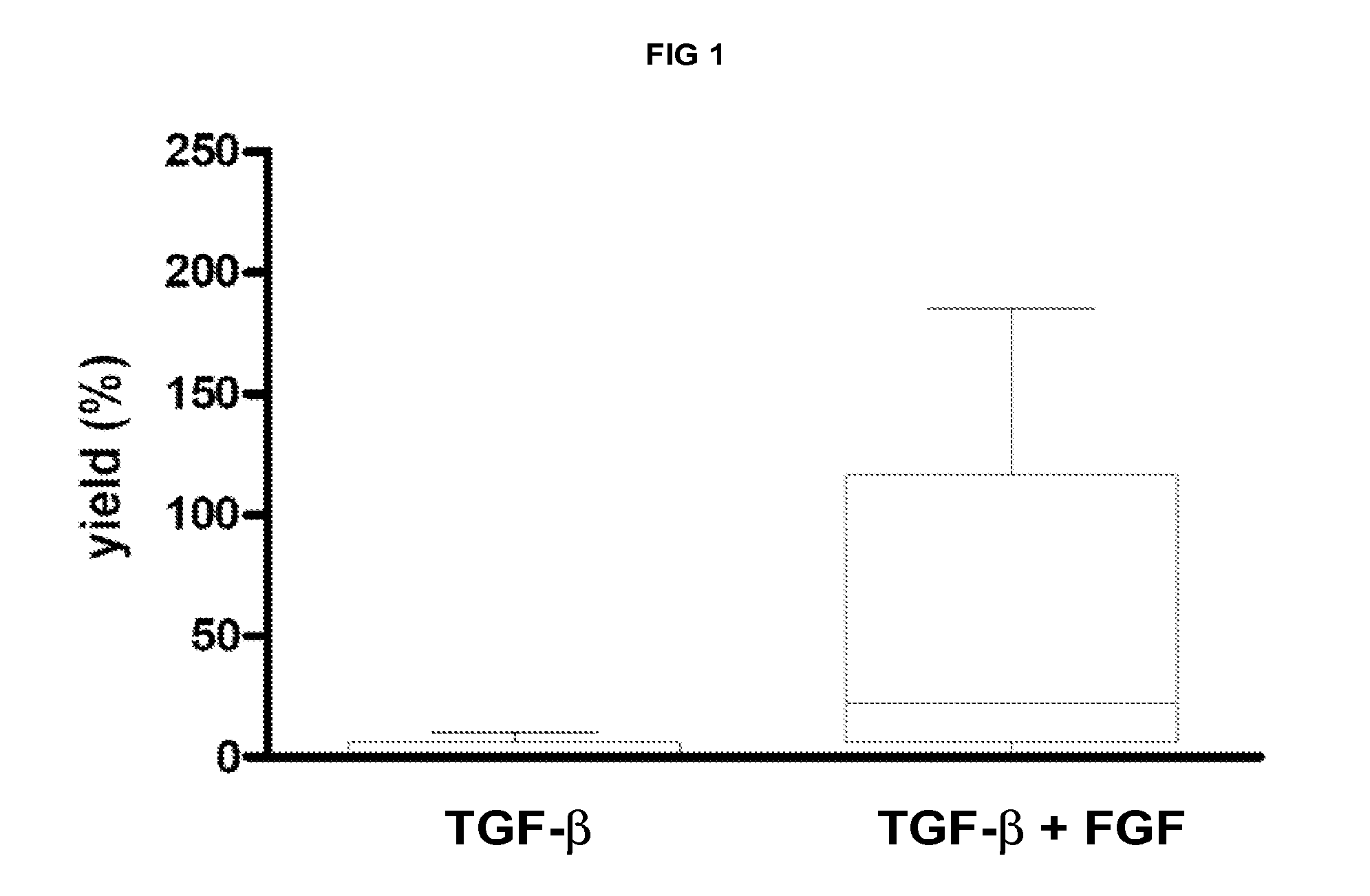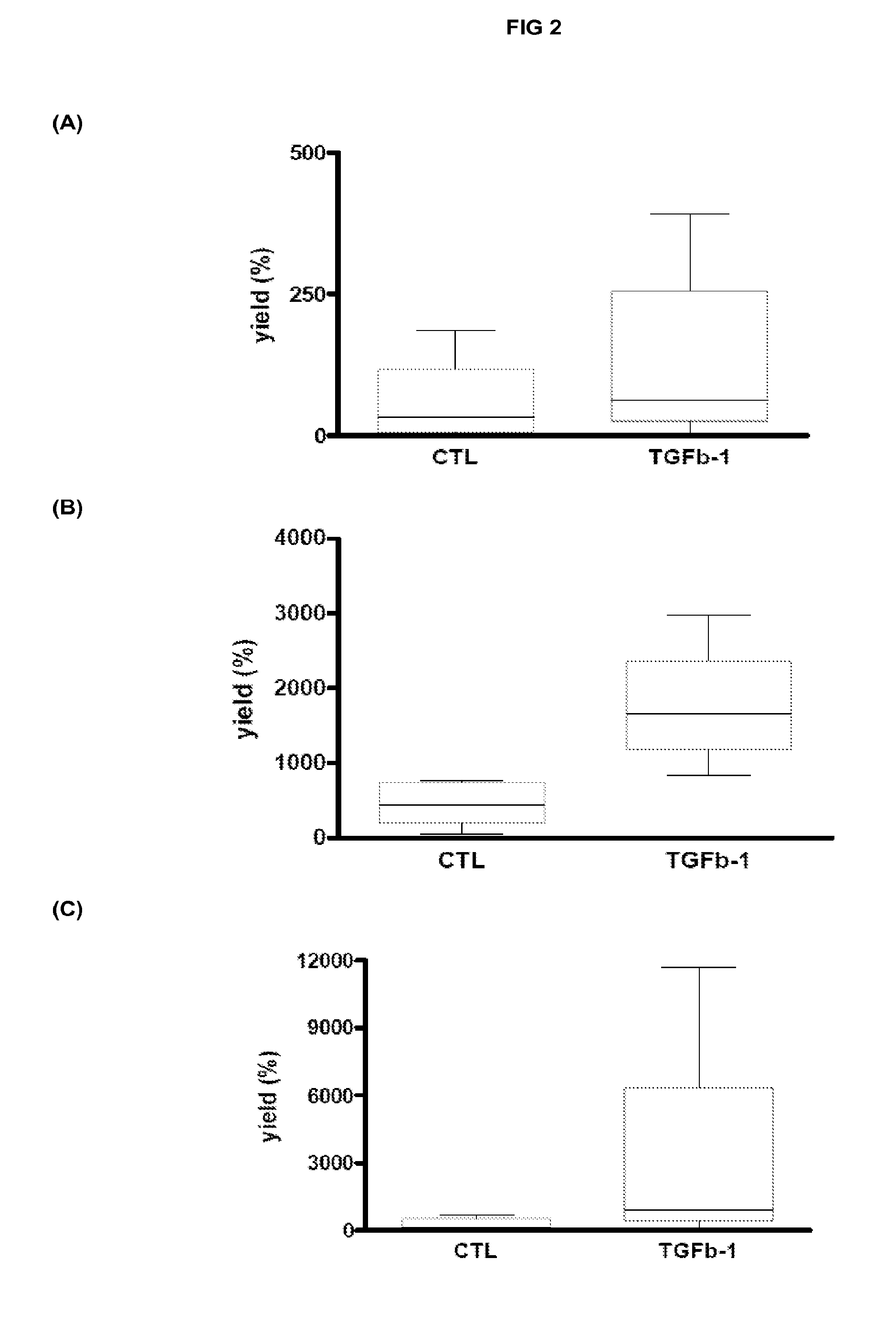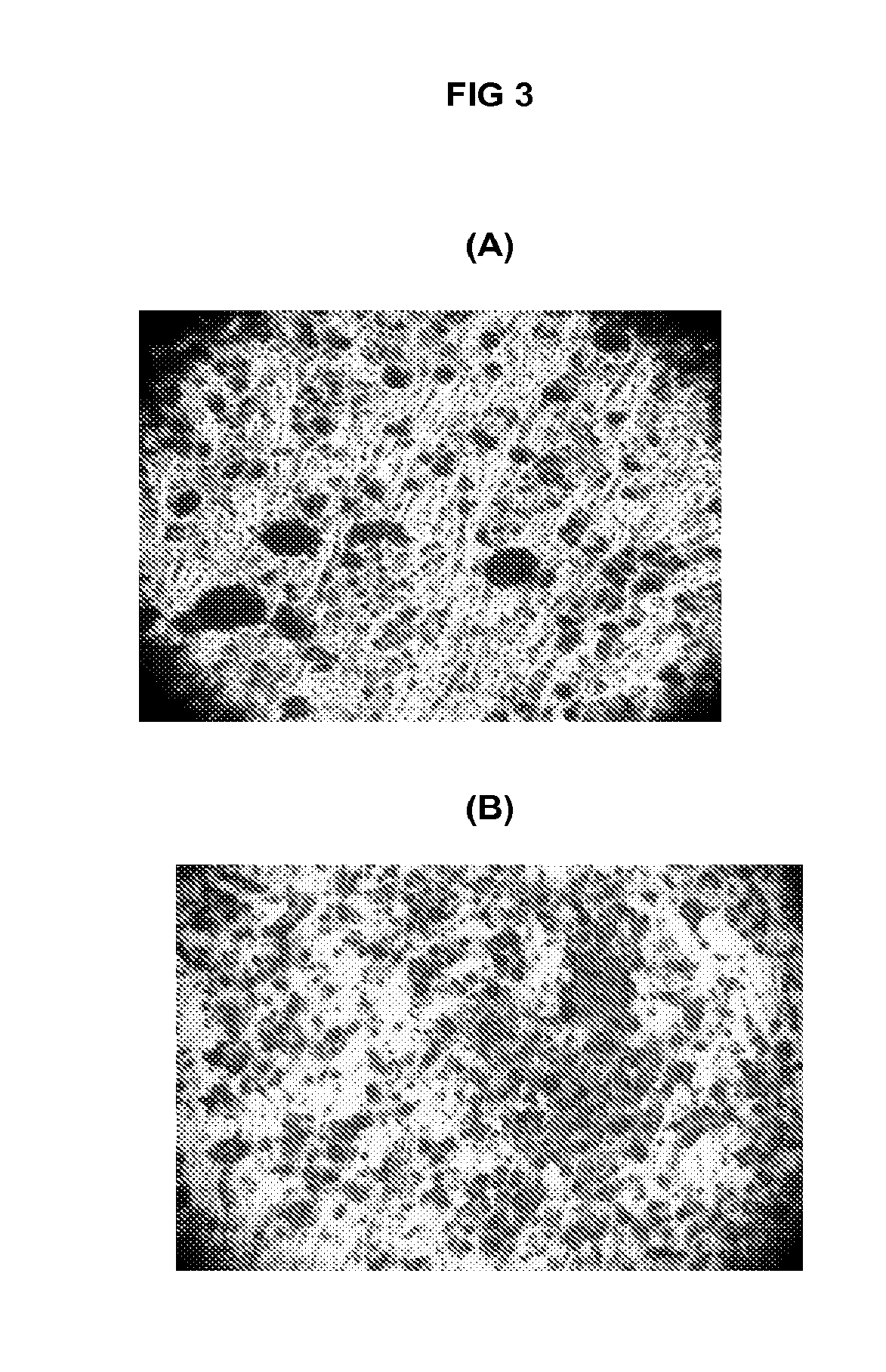Osteogenic Differentiation Of Bone Marrow Stem Cells And Mesenchymal Stem Cells Using A Combination Of Growth Factors
a technology of growth factors and stem cells, applied in the field of bone therapy, can solve the problems of reducing the quantity of such stem cells obtainable from bone marrow or other source tissues, affecting the formation of desired bone tissue, and affecting the quality of bone marrow, so as to achieve the effect of increasing the quantity of useful osteoprogenitor
- Summary
- Abstract
- Description
- Claims
- Application Information
AI Technical Summary
Benefits of technology
Problems solved by technology
Method used
Image
Examples
examples
Experimental Procedures
Cell Culture and Plasma Preparation
[0147]20 to 60 ml of heparinized bone marrow (BM) were obtained from iliac crest of patients suffering from bone diseases or from healthy volunteers. BM was mixed with phosphate-buffered saline (PBS, 2v:v) and layered on density gradient Ficoll solution. After centrifugation, mononuclear cells were harvested from the interface and washed twice in PBS. In parallel, serum from patients or healthy donors was obtained after centrifugation of 160 ml of blood drained into dry tubes. The cells were resuspended in DMEM medium supplemented with allogeneic plasma at 15% (autologous plasma may be used with substantially the same results), FGF2 at 10 ng / ml and TGFb-1 at 10 ng / ml. The cells were plated at 1×108 cells / 175 cm2 flasks and maintained in a 37° C. humidified atmosphere containing 5% CO2. The cells were allowed to attach for 1 days prior an initial medium change. Two other partial medium changes (half volume changed) are done at...
PUM
| Property | Measurement | Unit |
|---|---|---|
| temperature | aaaaa | aaaaa |
| pore size | aaaaa | aaaaa |
| concentration | aaaaa | aaaaa |
Abstract
Description
Claims
Application Information
 Login to View More
Login to View More - R&D
- Intellectual Property
- Life Sciences
- Materials
- Tech Scout
- Unparalleled Data Quality
- Higher Quality Content
- 60% Fewer Hallucinations
Browse by: Latest US Patents, China's latest patents, Technical Efficacy Thesaurus, Application Domain, Technology Topic, Popular Technical Reports.
© 2025 PatSnap. All rights reserved.Legal|Privacy policy|Modern Slavery Act Transparency Statement|Sitemap|About US| Contact US: help@patsnap.com



